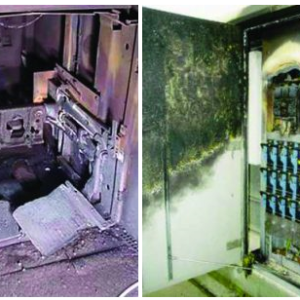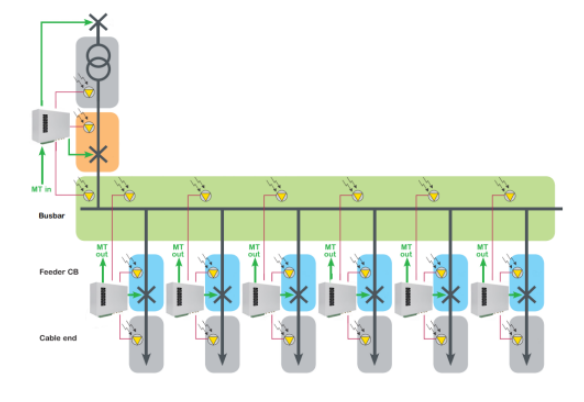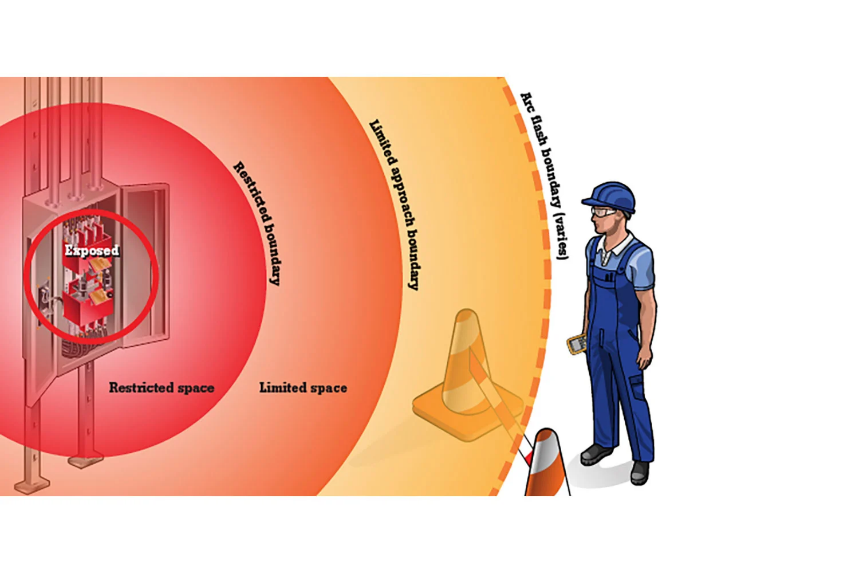
How to reduce arc flash incident energy
By bluejay | Company News
What is arc flash incident energy?
Arc flash incident energy is a measure of the potential heat energy released during an electrical arc flash event. It’s calculated in calories per square centimeter (cal/cm²) and represents the amount of energy that could be absorbed by exposed skin within a specific time frame. By calculating the Arc flash incident energy based on Intensity, distance, and duration, users can know the appropriate level of personal protective equipment (PPE) required to protect workers from potential injuries. For example, when PPE 0 ≤ 1.2 cal/cm², there is no requirement for arc flash-safe clothing. When PPE x > 40 cal/cm², there is extreme danger.


Arc flash incident energy calculation
arc flash Incident energy can be found using the equation below:
E = 4.184 * Cf * En * (t / 0.2) * (610x/Dx)
Where
E – incident energy exposure in J/cm2
Cf – calculation factor equal to 1.0 for voltages above 1 kV, and 1.5 for voltages below 1 kV
En – normalized incident energy in J/cm2 as calculated by Equation 1 above
t – arcing time in seconds
D – distance from possible arcing point to the person in millimeters
x – distance exponent.
For cases where voltage is over 15 kV, or gap is outside the range of the model, the theoretically derived Lee method can be applied, and incident energy can be determined by using the arc flash energy calculation equation.
How to reduce arc flash incident energy?
Here are four solutions to reduce arc flash incident energy (AFIE) and decrease the severity of an arc flash incident if one occurs.
- Reduce Arc Flash Incident Energy with ERMS
Per National Electrical Code section 240.87, any installation rated to 1,200 A or higher must be equipped with a solution that accelerates the clearing time on an arcing fault. An energy-reducing maintenance switch, or setting (ERMS) is one option to meet this code requirement.
When enabled, ERMS provides faster-than-instantaneous clearing times and up to a three-times reduction in arc fault energy. With ERMS, tripping follows a different path than usual so there is no delay before the circuit opens. In effect, the trip happens faster than the instantaneous setting on the usual path of the breaker. After the trip occurs, maintenance workers can then reduce their personal protective equipment by one level when entering the arc flash boundary.
- Keep power on with zone-selective interlocking
Zone selective interlocking reduces tripping time by overriding any intentional delays to rapidly clear faults at a localized point within a coordinated distribution system.
With this reduction solution, the upstream breaker nearest to the fault opens, but all other upstream and downstream breakers remain closed. By isolating the arc fault to a single zone, service remains on and the fault conditions are corrected.
- Increasing Working Distance to Reduce Arc Flash Incident Energy
Increasing the working distance between a worker and a potential arc flash source is a fundamental strategy for reducing incident energy exposure. This is because the intensity of the arc flash decreases as the distance from the source increases. Key Methods to Increase Working Distance include Remote Operation, Physical Barriers and Enclosures, Safe Work Practices, etc.
- Reduce fault clearing time with arc flash relays

Arc flash relays are a crucial component in reducing arc flash incident energy. These specialized relays are designed to detect the initial stages of an arc fault and quickly trip the circuit breaker, significantly reducing the duration of the arc and, consequently, the incident energy.
Conclusion
Arc flash energy poses significant risks in any facility dealing with high-power electrical systems. By understanding how to calculate incident energy and employing effective strategies, such as using current-limiting devices, optimizing system design, maintaining equipment, and training personnel, it is possible to reduce the severity and likelihood of arc flash events. Implementing these preventive measures helps create a safer work environment, protects employees, and minimizes the potential for costly equipment damage and downtime.
Related articles
Tags
Company News
What is arc flash incident energy?
Arc flash incident energy is a measure of the potential heat energy released during an electrical arc flash event. It’s calculated in calories per square centimeter (cal/cm²) and represents the amount of energy that could be absorbed by exposed skin within a specific time frame. By calculating the Arc flash incident energy based on Intensity, distance, and duration, users can know the appropriate level of personal protective equipment (PPE) required to protect workers from potential injuries. For example, when PPE 0 ≤ 1.2 cal/cm², there is no requirement for arc flash-safe clothing. When PPE x > 40 cal/cm², there is extreme danger.


Arc flash incident energy calculation
arc flash Incident energy can be found using the equation below:
E = 4.184 * Cf * En * (t / 0.2) * (610x/Dx)
Where
E – incident energy exposure in J/cm2
Cf – calculation factor equal to 1.0 for voltages above 1 kV, and 1.5 for voltages below 1 kV
En – normalized incident energy in J/cm2 as calculated by Equation 1 above
t – arcing time in seconds
D – distance from possible arcing point to the person in millimeters
x – distance exponent.
For cases where voltage is over 15 kV, or gap is outside the range of the model, the theoretically derived Lee method can be applied, and incident energy can be determined by using the arc flash energy calculation equation.
How to reduce arc flash incident energy?
Here are four solutions to reduce arc flash incident energy (AFIE) and decrease the severity of an arc flash incident if one occurs.
- Reduce Arc Flash Incident Energy with ERMS
Per National Electrical Code section 240.87, any installation rated to 1,200 A or higher must be equipped with a solution that accelerates the clearing time on an arcing fault. An energy-reducing maintenance switch, or setting (ERMS) is one option to meet this code requirement.
When enabled, ERMS provides faster-than-instantaneous clearing times and up to a three-times reduction in arc fault energy. With ERMS, tripping follows a different path than usual so there is no delay before the circuit opens. In effect, the trip happens faster than the instantaneous setting on the usual path of the breaker. After the trip occurs, maintenance workers can then reduce their personal protective equipment by one level when entering the arc flash boundary.
- Keep power on with zone-selective interlocking
Zone selective interlocking reduces tripping time by overriding any intentional delays to rapidly clear faults at a localized point within a coordinated distribution system.
With this reduction solution, the upstream breaker nearest to the fault opens, but all other upstream and downstream breakers remain closed. By isolating the arc fault to a single zone, service remains on and the fault conditions are corrected.
- Increasing Working Distance to Reduce Arc Flash Incident Energy
Increasing the working distance between a worker and a potential arc flash source is a fundamental strategy for reducing incident energy exposure. This is because the intensity of the arc flash decreases as the distance from the source increases. Key Methods to Increase Working Distance include Remote Operation, Physical Barriers and Enclosures, Safe Work Practices, etc.
- Reduce fault clearing time with arc flash relays

Arc flash relays are a crucial component in reducing arc flash incident energy. These specialized relays are designed to detect the initial stages of an arc fault and quickly trip the circuit breaker, significantly reducing the duration of the arc and, consequently, the incident energy.
Conclusion
Arc flash energy poses significant risks in any facility dealing with high-power electrical systems. By understanding how to calculate incident energy and employing effective strategies, such as using current-limiting devices, optimizing system design, maintaining equipment, and training personnel, it is possible to reduce the severity and likelihood of arc flash events. Implementing these preventive measures helps create a safer work environment, protects employees, and minimizes the potential for costly equipment damage and downtime.







